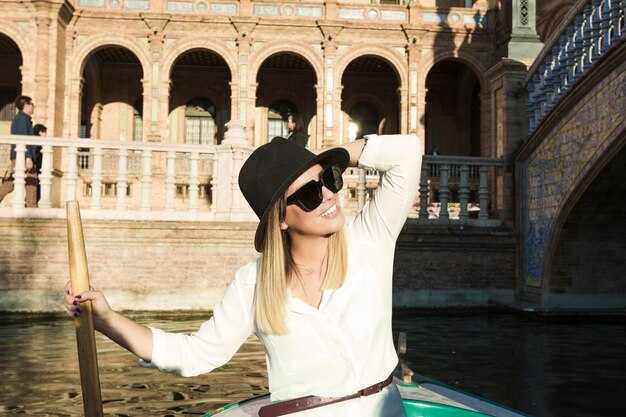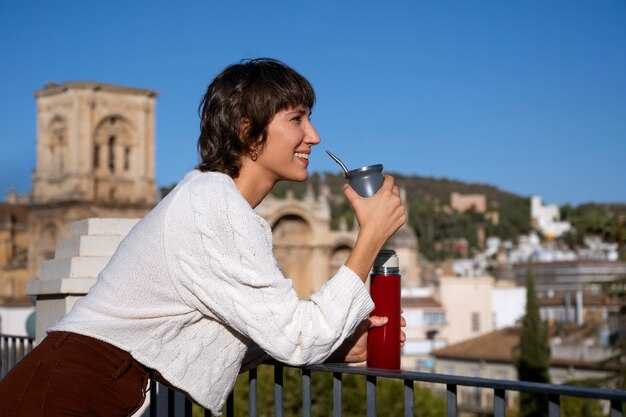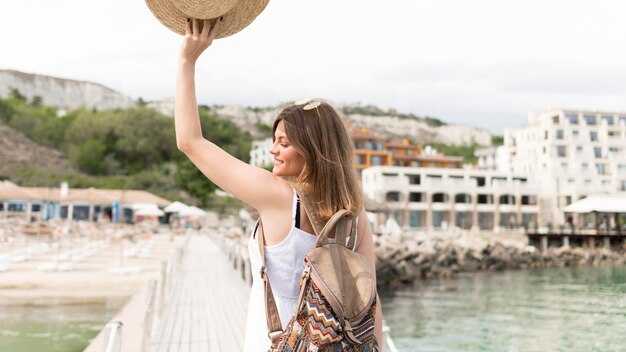Begin with an unmissable two-and-a-half-hour itinerary that kicks off at the Colosseum, threads through the Roman Forum, and climbs Palatine Hill. depending on ticket times, you can tweak the pace, but this classic start grounds you in history and sets momentum for the day. The area around these sites spans hectares of parkland, offering spaces to pause for photos and espresso breaks.
Venture into lesser-known lanes to balance the crowds: the Aventine keyhole view, the quiet courtyards around Piazza di Santa Maria in Trastevere, and a staircase climb that reveals a citys skyline beyond ancient walls. This balance makes your day feel intimate even with a thousand visitors in the main squares.
Then trace the hadrians path toward Castel Sant’Angelo and the altar of the Fatherland, where a broad staircase and terraces deliver sweeping views and a citys century of history.
In the Forum area, read plaques that cover a century of daily life, from republican rites to markets, and then swing by the centrale rail hub near Termini for a quick espresso to recharge.
those who believe Rome is only about grand monuments will find depth in the small streets around Trastevere and Testaccio; lets tailor the afternoon, discovering lesser-known churches and an altar, depending on what you read on-site and where you feel drawn down winding lanes.
How to reach Piazza del Campidoglio from Termini or the Metro

From Termini, ride Metro Line B toward Laurentina to Colosseo (about 6–8 minutes). Exit and follow Via dei Fori Imperiali for roughly 900 meters, then ascend the Cordonata to Piazza del Campidoglio. The total time from Termini is around 25–30 minutes, depending on crowds. You’ll pass the Forum and catch a tall column on the way, and the stone catches a warm gold hue as you climb.
As an alternative, take Line A from Termini to Spagna, then walk north on Via del Corso toward Piazza Venezia and ascend the Capitoline steps to the square. This route adds a bit of urban walking but offers a different perspective on Rome’s layout and takes about 30–40 minutes in total.
Nearby Campidoglio you’ll find quick lunch options with fried snacks and sandwiches. It’s possible to purchase a guided or skip-the-line ticket for the Capitoline Museums to maximize time. On side streets you’ll notice random shops and even there,santangelo postcards for sale.
If you’re curious about art along the way, Caravaggio fans can extend the day with a couple of works in nearby churches, or plan a separate stop later. The walk still keeps you in an urban rhythm, with nearby parks and the river scenery along the Tiber providing chances to pause, learn, and post favorite experiences of your trip, almost like a local. It’s a simple route that helps you feel the city’s character and (if you’re lucky) discover a favorite corner you’ll want to revisit with friends.
Best time to visit Piazza del Campidoglio to minimize crowds
Visit at first light on a weekday, between 7:00 and 9:00, to enjoy Piazza del Campidoglio with minimal crowds and crisp light on the marble. Arrive early to descend the staircase without rush, soak in the site, and enjoy quiet views toward the dome across the Tiber. From this vantage you may spot peters across the water while the romans’ houses line the palatine slopes and the spagna area hums softly in the distance.
When to go for the calmest experience

Seasonal pattern favors late autumn and winter for the smallest crowds; spring and fall weekends bring more visitors. Plan weekday visits, preferably Tue–Thu, in the 7:00–10:00 window to keep the pace relaxed. If you must visit later, target a late afternoon slot around 16:00–17:30 when light softens and the initial rush subsides. This timing suits leisure planning and gives time to stroll toward the giardino, maybe grab carciofi from a nearby stall, and enjoy a magical moment on the site. For a basic loop, follow the corso toward the spagna end and keep your eye on the palatine façades as the dome glints above the rooftops. It’s a moment loved by romans who appreciate the calm. If you want to stay comfortable, pack a small bucket for a quick snack break.
Where to stand and what to do for the best photos
Stand on the smaller staircase that leads into the giardino to avoid crowding the main route and to frame the villa façades with the dome rising behind. From the edge of the terrace you gain a view along the Tiber toward peters and the river’s curve. If you wish, step inside the state rooms to see maria legends and inscriptions, then return outdoors for a wider shot that includes the houses and the corso line below. This simple route, with a touch of basic planning, keeps shoulder-to-shoulder crowds away and makes it easy to enjoy the magical Italian light. Further, a quick stroll toward the Palatine area lets you compare the old villas and the modern Capitol complex, a reminder of how romans loved this site for centuries.
Where to start your walk around Capitoline Hill for maximum impact
Begin at the steps on capitoline hill for an outstanding first impression. From this terrace you frame the city with the most dramatic view toward the archaeological lines of the Forum below and the urban life around capitoline.
Next, head toward the Capitoline Museums for a concise overview; admission is separate, and buying online helps avoid lines for the most popular rooms.
Inside, pick a couple of highlights: classical statues, mosaics, and a terrace overlook that explains how the ancient world met the Renaissance. The pieces found here anchor capitoline life and give your feet a sense of standing on history.
After the museums, descend the ceremonial stairs toward the Forum, following the lines of arches and the remains of ancient walls. These views reveal the strata of Rome and build a direct link from temple foundations to later rooftops, with a hard edge that sharpens your sense of place.
From the Forum, stroll along corso toward santangelo (Castel Sant’Angelo) for a compact urban loop; on your left you glimpse the castle and on the right a living slice of urban life.
For a perfect night cap, return to the terraces after sunset when lamps glow and the city turns into a stage. The views from capitoline at night are outstanding and the glow emphasizes the marble and stone textures.
maria explains that you should pace the walk to fit your plans, and that a short stop near the fountains refreshes the mind. Ask her where to find the best viewpoints and the exit to the next leg of your Rome day.
A 1.5–2 hour loop is typical, with extensions to include the museums or Castel Sant’Angelo adding more time. Check official sites for current admission times and tickets; think about arriving before mid-morning to avoid crowds and to keep the total pace comfortable.
Must-see sights on the Piazza del Campidoglio and nearby buildings
Begin atop the terrace for a dawn view over the Forum and the hills beyond, then descend Michelangelo’s staircase into the square’s precise geometry. The 16th-century redesign ties the space together with a central axis that guides the eye from the slope to the statue at the center.
Two palaces anchor the square: Palazzo dei Conservatori on the west and Palazzo Nuovo on the east. Within these wings, the Capitoline Museums gather ancient bronzes, carvings, and canvases that reflect Rome’s long arc of eras. The Lupa Capitolina, a bronze sculpture of the she-wolf with Romulus and Remus, sits in the Conservatori, while the equestrian statue of Marcus Aurelius is housed in the galleries nearby. Each room offers a different angle on Rome’s past, so plan a quick pass through both wings.
From the terrace, the view spans arches that thread the Forum with the surrounding hills. The central column-like elements anchor your photo, and the staircases frame the skyline. If you visit before crowds, you have a better chance to study the details and see how the arch lines guide your gaze toward the Forum’s ancient remains.
Keep an eye out for a Vespa gliding by on the street below–Rome delivers small, vivid moments as you map your plan for the next stops. A Vespa with a quattro engine adds a touch of modern pace to the ancient stone. Sit for a moment on a bench, forget the rush, and map your path through this compact cluster of history.
| Ιστοσελίδα | Κύρια σημεία | Συμβουλές |
|---|---|---|
| Piazza del Campidoglio terrace | Panoramic view facing the Forum, Palazzo façades, central positioning of the equestrian statue | Best at dawn or late afternoon; wear comfortable shoes |
| Palazzo dei Conservatori | Bronze works, Lupa Capitolina, early modern paintings, approachable galleries | Allow 40–60 minutes; free inner courtyard entry |
| Palazzo Nuovo | Classical sculpture galleries, refined marble statues | One to two rooms with long sightlines; close to the terrace |
How to pair a Capitoline Museums visit with the Piazza experience
Sure, buy skip-the-line tickets for Capitoline Museums and start early, then stroll to the Piazza del Campidoglio to absorb heritage and city energy in one seamless motion. Even with popular times, you’ll see lines around the piazza, so skip-the-line access helps keep the flow smooth.
The museum complex sits on Capitoline Hill, spanning several hectares, and connects to the ancient forum and surrounding squares, creating a compact block of history with pretty city views.
As you move from galleries to the piazza, statues line the terraces, always offering dramatic backdrops for photos. Today’s travelers expect a smooth transition, so plan this pairing as a leisure loop that keeps you moving and avoids delays.
Two practical steps to combine visits
- Ξεκινήστε με τα Μουσεία του Καπιτωλίου νωρίς το πρωί, χρησιμοποιώντας την είσοδο skip-the-line για να φτάσετε σε σημαντικά σημεία, όπως μια προτομή του Κωνσταντίνου και ο Θνήσκων Γαλάτης. Αφιερώστε περίπου 60–75 λεπτά για να επισκεφθείτε τις γκαλερί και, στη συνέχεια, κατευθυνθείτε στην Piazza del Campidoglio για να θαυμάσετε την πόλη από ψηλά και να θαυμάσετε τα γύρω αγάλματα, συμπεριλαμβανομένων των αγαπημένων στη συλλογή.
- Από την πλατεία, περπατήστε προς την Trinità dei Monti για μια γρήγορη παράκαμψη αν έχετε χρόνο, και έπειτα προς τη Santa Maria in Aracoeli για να δείτε το άγαλμα της Παρθένου και να νιώσετε τη θαμμένη ιστορία στον λόφο. Ελέγξτε τα σιντριβάνια κατά μήκος της διαδρομής και επιλέξτε το αγαπημένο σας σημείο για φωτογραφίες, διατηρώντας έναν χαλαρό ρυθμό ώστε να μπορείτε να απολαύσετε την ατμόσφαιρα παρά να βιάζεστε και αφήστε τη στιγμή να μετατραπεί σε διαρκείς αναμνήσεις.
Έπειτα, πάρτε μια πίτσα κοντά για να σηματοδοτήσετε ένα διάλειμμα αναψυχής. Αυτή η διαδρομή παραμένει αγαπημένη για τους ταξιδιώτες που θέλουν να κρατήσουν την ημέρα ελαφριά και συνδεδεμένη, σήμερα περισσότερο από ποτέ μια σταθερή σύζευξη για επισκέπτες που έρχονται για πρώτη φορά.
Γωνίες και οπτικές φωτογραφίας για τις σκάλες και τις προσόψεις του Καπιτωλίου
Ξεκινήστε με μια συγκεκριμένη σύσταση: Ξεκινήστε με ένα χαμηλό, κοντινό πλάνο από τη γωνία κάτω από τις σκάλες του Καπιτωλίου για να τονίσετε την υφή και την κλίμακα. Αυτή η γωνία κάνει τον κεντρικό άξονα να φαίνεται καθαρά ενώ οι βεράντες υψώνονται πίσω από τα αγάλματα.
-
Γωνία βάσης από κάτω: Τοποθετήστε έναν ευρυγώνιο φακό (16-35mm σε full-frame ή 11-22mm σε APS-C) και τραβήξτε φωτογραφία σε f/8, 1/125 δευτ., ISO 100. Αυτό κάνει τα κιγκλιδώματα και τις φιγούρες να ξεχωρίζουν σε έναν φωτεινό ουρανό. Κρατήστε τις κατακόρυφες γραμμές ευθείες και αφήστε τον δρόμο από κάτω να σχηματίσει μια γραμμή που οδηγεί προς τον κεντρικό άξονα. Συμπεριλάβετε κοντινά σπίτια και την άκρη του δρόμου για να μεταδώσετε το πλαίσιο. θα καταλάβετε πώς αγκυροβολούν τη σύνθεση και τον ρυθμό σε ολόκληρη τη σκηνή. Εάν εμφανιστεί παραμόρφωση, δεν μπορείτε να τοποθετήσετε τον φακό τέλεια – τραβήξτε μια γρήγορη λήψη με μικρότερη εστιακή απόσταση και, στη συνέχεια, επαναδιαμορφώστε το κάδρο. Δεν υπάρχει αμφιβολία ότι αυτή η γωνία διδάσκει πώς το μάτι κινείται από το προσκήνιο στις μνημειακές προσόψεις.
-
Αριστερή γωνία, τριών τετάρτων: Από τη γωνία κοντά στον δρόμο, μεταβείτε σε μια γωνία τριών τετάρτων που πλαισιώνει το Palazzo Senatorio στο κέντρο με τους Conservatori και Nuovo σε κάθε πλευρά, με τις βεράντες τους να στοιβάζονται από πάνω. Χρησιμοποιήστε 24-70mm για να ισορροπήσετε την αρχιτεκτονική και τον χώρο. Η λήψη θα πρέπει να δείχνει πώς τα κτίρια ευθυγραμμίζονται με την πλατεία και πώς οι βεράντες καθοδηγούν το βλέμμα προς τα πάνω. Η ογκώδης μάζα πέτρας που μοιάζει με κάστρο στον ουρανό δημιουργεί μια εντυπωσιακή σιλουέτα και το παράθυρο στην πρεσβεία κατά μήκος του δρόμου μπορεί να αποδώσει διακριτικές αντανακλάσεις που προσθέτουν βάθος. Διατηρούνται σε τάξη μέσα από αιώνες φροντίδας, κάτι που μπορείτε να δείτε στις λεπτομέρειες.
-
Λήψη μιας ευθείας λήψης της βεράντας στον κεντρικό άξονα: Ανεβείτε στην κεντρική βεράντα της πλατείας και τραβήξτε απευθείας προς τις προσόψεις, ευθυγραμμίζοντας τα τρία παλάτια έτσι ώστε να σχηματίζουν ένα ενιαίο μέτωπο. Ένας μεγαλύτερος φακός (50-135mm) συμπιέζει το βάθος και κάνει τα αγάλματα κατά μήκος του κιγκλιδώματος να φαίνονται πιο κοντά. Αυτή η θέα μεταφέρει την αρχαία ακεραιότητα της πέτρας μέσα από την αρχιτεκτονική, και μπορείτε να συμπεριλάβετε τους Παλατινούς λόφους ή τη Ρωμαϊκή Αγορά στο βάθος για κλίμακα. Αυτή η προσέγγιση σας βοηθά να κατανοήσετε τη σχέση των τριών δομών και τον χώρο που καταλαμβάνουν σε όλη την άποψη της πόλης. Δεν υπάρχει αμφιβολία ότι η ευθεία σύνθεση επικοινωνεί ενότητα και μονιμότητα.
-
Απομακρυσμένο πλαίσιο με τον Παλατίνο και τους κήπους: Κάντε ένα βήμα πίσω σε μια ευρύτερη θέση στην πλατεία και πλαισιώστε τους κήπους του λόφου με τον Παλατίνο στο φόντο. Αυτή η μακρινή λήψη δείχνει πώς η αρχιτεκτονική εντάσσεται στο τοπίο της και δίνει μια αίσθηση του τόπου μετά από μια βόλτα γύρω από την πλατεία. Εάν τα κοντινά παράθυρα της πρεσβείας πιάσουν φως, χρησιμοποιήστε αυτήν την αντανάκλαση για να προσθέσετε ένα σύγχρονο αντίστιχο στην αρχαία πέτρα. Διατηρήστε τις γραμμές να διατρέχουν τις προσόψεις για να ενισχύσετε την ενότητα.
-
Λεπτομέρεια κατά μήκος του κιγκλιδώματος και των αγαλμάτων: Για κοντινή υφή, τραβήξτε κατά μήκος του κιγκλιδώματος όπου η πέτρα συναντά τον ουρανό. Ένας τηλεφακός ή μακροεντολή 85mm ή 100mm σάς επιτρέπει να απομονώσετε τα σκαλιστά μοτίβα, τα fiori σε ζαρντινιέρες και τα λεπτά σχέδια της πέτρας. Τραβήξτε στο f/4–f/5.6 για να διαχωρίσετε το προσκήνιο από το φόντο διατηρώντας παράλληλα τις λεπτομέρειες ευκρινείς. Αυτή η γωνία σάς βοηθά να μην χάσετε τίποτα από τη δεξιοτεχνία και τονίζει την αρχιτεκτονική που τα επαναλαμβάνει στις προσόψεις.
Επιλογές για το βράδυ και μετά το ωράριο: Ο κεντρικός άξονας αποκτά μια θερμή λάμψη κοντά στη χρυσή ώρα. στήστε ένα τρίποδο και δοκιμάστε εκθέσεις 2–4 δευτερολέπτων για να καταγράψετε ίχνη φωτός κατά μήκος του δρόμου και αντανακλάσεις στην πέτρα. Αυτή η περίοδος ανάπαυσης σας επιτρέπει επίσης να συγκρίνετε τους κήπους και τα πάρκα γύρω από την πλατεία καθώς πέφτει η νύχτα, ενώ η αρχιτεκτονική παραμένει μια ιδιαίτερη άγκυρα. Μετά το σούρουπο, σκεφτείτε μια μικρή βόλτα σε μια κοντινή ταράτσα για να πιείτε κρασί και να ελέγξετε τις λήψεις και, στη συνέχεια, επιστρέψτε με φρέσκο μάτι για να επιβεβαιώσετε ότι έχετε διατηρήσει τη σύνθεση σφιχτή και πιο κοντά στο αρχικό σας σχέδιο.



Σχόλια